The mysterious biology of video game bad guys explained
Walking fungus? Sentient hands? What are they, really?
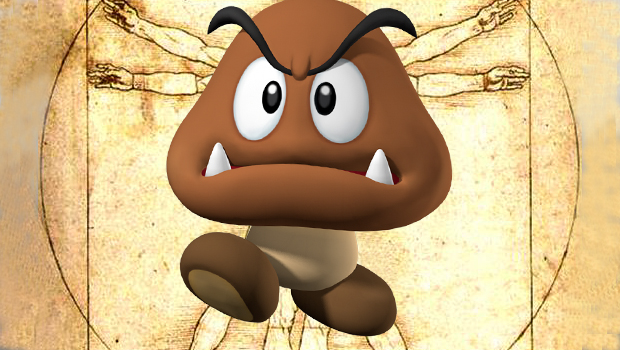
Weird science
As gamers, we're used to things being a bit weird. With the majority of games still taking place in sci-fi or fantasy settings, the worlds we play in are usually filled with all kinds of distinctly odd flora and fauna. But while some of the stuff we come up against kind of makes sense within context, there are some video game creatures whose functional existence is utterly inexplicable in biological terms. There are some enemies and monsters that simply defy all biological reasoning.
So we've decided to try to reason a few of them back into the realm of logic, using cold, hard, pseudo-science. How the hell does a Goomba actually work? Why does it exist? What manner of twisted evolutionary path allows bizarro monsters to avoid an instant and messy death while floating around in outer space? Click on, and we'll try to explain using a combination of semi-educated guesswork and vaguely scientific stabs in the dark.
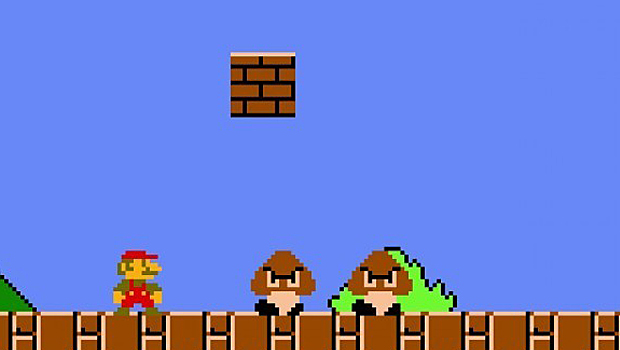
Goomba - Super Mario Bros. series
Is weird because: It's a walking, semi-sentient mushroom. It has the ability to move using rudimentary limbs, and has a face. Real fungus does not possess any of these abilities or features. Also, it manages to insta-kill Mario on contact, seemingly without even biting him.
Could only exist if: The fungus wasn't working alone. The Goomba must logically be the product of some manner of parasitic fungus, like the Cordyceps strain seen in The Last of Us. The fungus attaches itself to an unfortunate host (say, a puppy or small child), grows through and around its body, and ultimately takes control of its basic brain functions, forcing it to walk endlessly back and forth in an attempt to find and spread to additional food sources. Hence the fact that Goombas are often found in groups. Its ability to kill on contact is presumably the result of a biological toxin released through the fungus' surface in order to protect it from being eaten by predators, or perhaps an ultra-fast acting digestive enzyme.
Given the state of the Mushroom Kingdom, its entirely possible that the regions monicker is just a darkly ironic slang term, used to reference the area following a crippling countrywide outbreak.
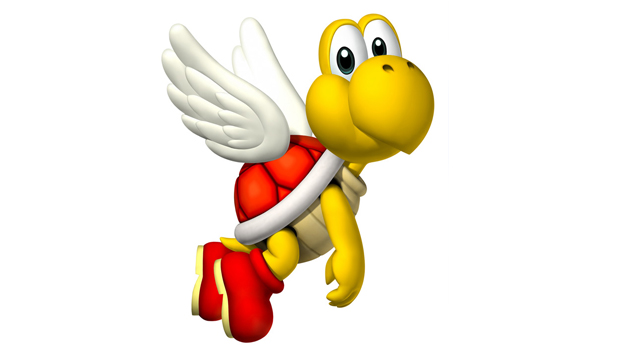
Paratrooper - Super Mario Bros. series
Is weird because: It's a turtle with wings. It can jump, and sometimes even fly using said appendages. Turtles have no real reason to fly, having evolved as an essentially defensive, herbivorous species. There are no plants in the sky, and having two fleshy, feathery wings sticking out of their shells must surely undermine the whole point of having a bony back-shield in the first place.
Could only exist if: It wasn't a turtle, but a bird. The odds of a shelled reptile evolving to leave the ground are very slim indeed, but the odds of a bird evolving greater defensive capabilities? Also very slim, but not quite so skinny. Particularly given that Paratroopers flight paths so frequently coincide with their being used as a stepping stone between inconveniently spaced platforms scattered across the Mushroom Kingdom countryside. Throw in the ever-present threat of fungus infection, and it's even more understandable that some of the area's wildlife would have developed hardier outer defenses to the end of survival of the fittest.
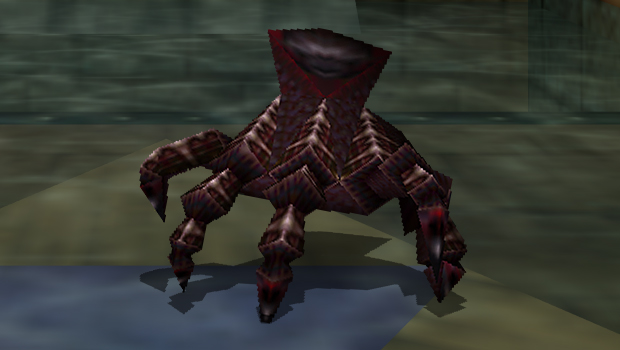
Wall/Floormaster - The Legend of Zelda series
Is weird because: It's a disembodied, sentient hand. Hands don't usually operate independently from a body, but this one does.
Could only exist if: There are two options here. Firstly, the Wallmaster might not actually be a hand, but a five-legged creature that just looks like one. Or a more traditional four-legged beasty which uses its 'thumb' as some manner of prehensile tool of attack. The other, more disturbing possibility is that the Wallmaster is the dismembered hand of a much larger creature.
In the real world, starfish can reproduce by the process of fission, losing a portion of their body (even just an arm in some cases) only to have the removed segments regenerate a whole new body. It's feasible that Wallmasters are the surviving severed elements of a creature undergoing this process. If you think that they're scary in their current state, consider the possibility that there's a nearby giant missing a hand, and that once the Wallmaster regrows a new arm, body and the rest, there'll be two of the buggers stomping around.
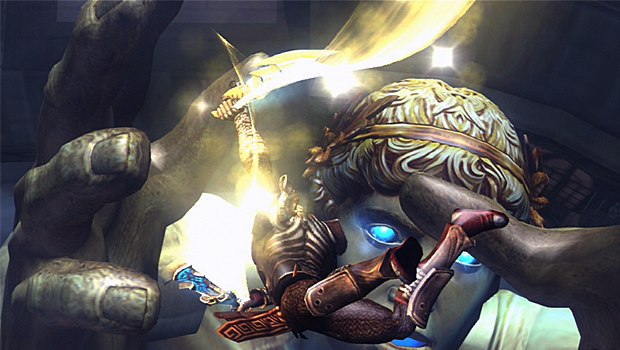
Colossus of Rhodes - God of War II
Is weird because: It's made of bronze and stone, and has a solid-state exterior. But it moves. Without breaking. If the Colossus had been built with ball-and-socket joints, like an action figure, we could see this working. But with a solid surface? No way. Its arm would crack off the second it took a swing at Kratos. That's the problem you get with all Golem-derivative monsters.
Could only exist if: Its skin existed in a semi-molten state when 'alive', applying the necessary malleability to the statue's surface in order to allow movement. Though if taken too far, this could result in all of the stone blocks and iron framework theorised to support the statues interior falling out. Or maybe the skin would fall straight off, like in that bit at the end of Hellraiser II, leaving naught but a shonky Greek Terminator sloshing around in the sea.
Either that, or the whole thing was secretly just coated in rubber to save on the budget.

Space Camels - Matrix: Gridrunner 2
Is weird because: It's a camel that exists in the cold, dark void of space without freezing and exploding into icy bits of camel.
Could only exist if: It were actually a super-evolved tardigrade. Rather unbelievably, these minute little critters (usually only about a millimetre long when fully grown) are the hardiest things on or off the planet. Able to brush off conditions of temperature, pressure and atmosphere lethal to most life forms on Earth, they're actually capable of surviving for at least ten days in space. Seriously, they've tested it out. By going into an ultra-low metabolism state called cryptobiosis they can effectively go into reversible suspended animation, dropping their water content to around 1% and allowing themselves to survive in space without suffering the aforementioned explosive ice-death. This living desiccation is facilitated by a non-reducing sugar called Trehalose.
So let's say the Space Camels operate in a similar way, and that rather than storing fat, their humps contained the magic life-sugar. They just sort of drift around in the game, so it's entirely possible that they're in a state of unconscious self-stasis. Until you shoot them to bits.
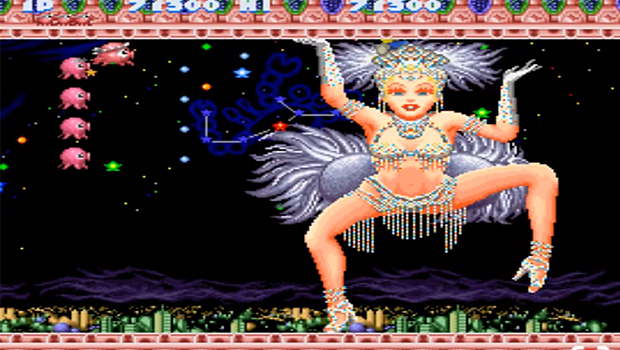
Giant Vegas dancing girl - Parodius series
Is weird because: She's massive. As such, her bones would collapse under her own weight. That's the problem with giants of any kind. As the size and weight of a building or a creature increases, the strain on the supporting structure (in this case a skeleton) goes up disproportionately, meaning that bones that worked just fine for an ordinary 5-6 foot person would crumble like chalk if attempting to hold up a 50 foot version. A real-life giant dancing girl wouldn't be performing dainty kicks while she fought you. She'd be lying on the ground like a big sequined jellyfish, begging for death using the feeble selection of noises her poor crippled throat could manage.
Could only exist if: Her bones were made of iron. Though that would increase the strain on the muscles required to move them. Which would demand vastly increased muscle density. No wonder she's immune to bullets.
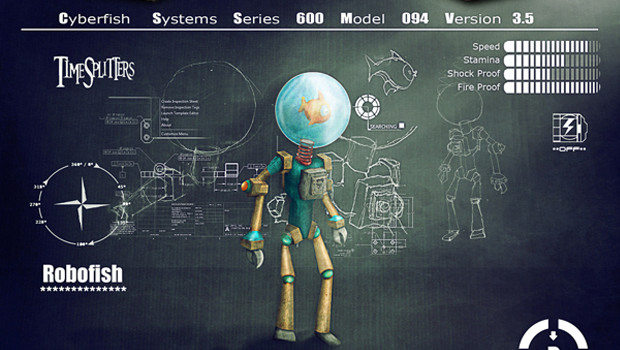
Robofish - TimeSplitters series
Is weird because: It's a fish in a bowl attached to a robot body. The fish somehow controls the robot body despite not being physically attached itself.
Could only exist if: The water in the fishbowl isnt water at all. Assuming that the robot is controlled by the fish's neurological impulses (assuming that the fish is intelligent enough to have the capacity to both control the robot and remember what a robot even is four seconds later), then the obvious way to get those signals to the machinery is via an electroconductive gel. Game controllers exist which convert electrical signals from the user's brain into measurable control inputs. The interface is usually a headband worn by the user, but if we're invoking the sci-fi science clause, then theoretically a conductive goo -- like the kind used with electrical muscle stimulation devices -- could be used as a transmission medium. As for how fish got out of water and into mini-mechs in the first place... moving swiftly on...
Illustration credit: Samuel Constant. Check out his page on Behance.
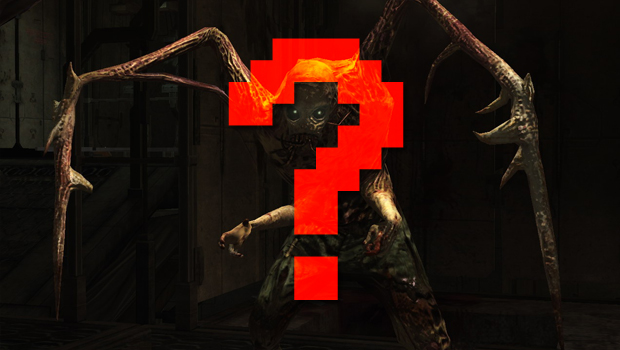
Bizarre creations
So there's our current analysis of the bemusing and bizarre. But are there any other peplexing permutations of the physical form that you feel need looking at? Any other video game creatures that you think need explanation? Or maybe a few that you think you've worked out yourself? Let us know.
And while you're here, check out some of our similar educational musings. How to be a video game guard: A professional guide would be a good start, as would 8 reasons why Bowser always fails. Give them a go.



